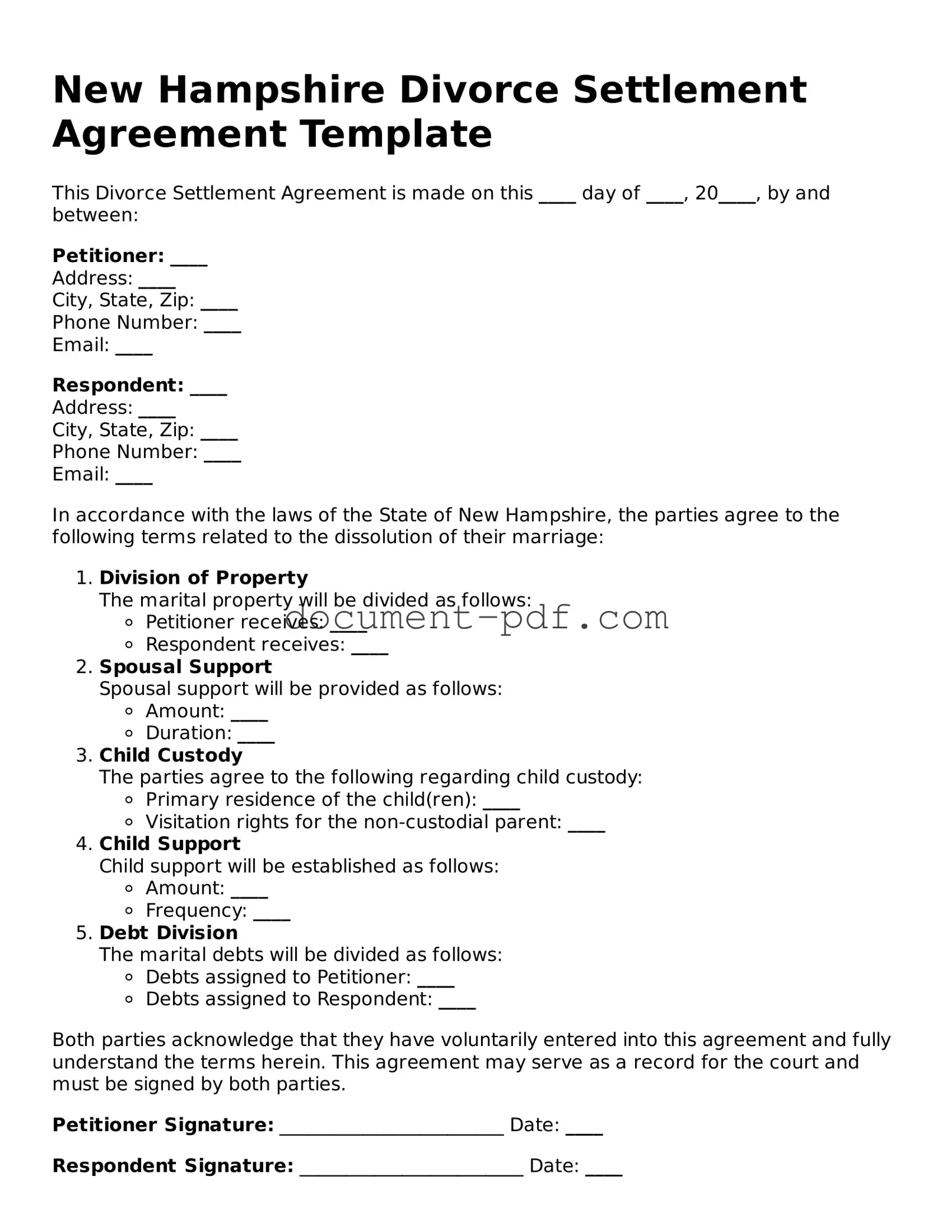New Hampshire Divorce Settlement Agreement Template
This Divorce Settlement Agreement is made on this ____ day of ____, 20____, by and between:
Petitioner: ____
Address: ____
City, State, Zip: ____
Phone Number: ____
Email: ____
Respondent: ____
Address: ____
City, State, Zip: ____
Phone Number: ____
Email: ____
In accordance with the laws of the State of New Hampshire, the parties agree to the following terms related to the dissolution of their marriage:
- Division of Property
The marital property will be divided as follows:
- Petitioner receives: ____
- Respondent receives: ____
- Spousal Support
Spousal support will be provided as follows:
- Amount: ____
- Duration: ____
- Child Custody
The parties agree to the following regarding child custody:
- Primary residence of the child(ren): ____
- Visitation rights for the non-custodial parent: ____
- Child Support
Child support will be established as follows:
- Amount: ____
- Frequency: ____
- Debt Division
The marital debts will be divided as follows:
- Debts assigned to Petitioner: ____
- Debts assigned to Respondent: ____
Both parties acknowledge that they have voluntarily entered into this agreement and fully understand the terms herein. This agreement may serve as a record for the court and must be signed by both parties.
Petitioner Signature: ________________________ Date: ____
Respondent Signature: ________________________ Date: ____
The parties may wish to consult with their respective attorneys before finalizing this document.
